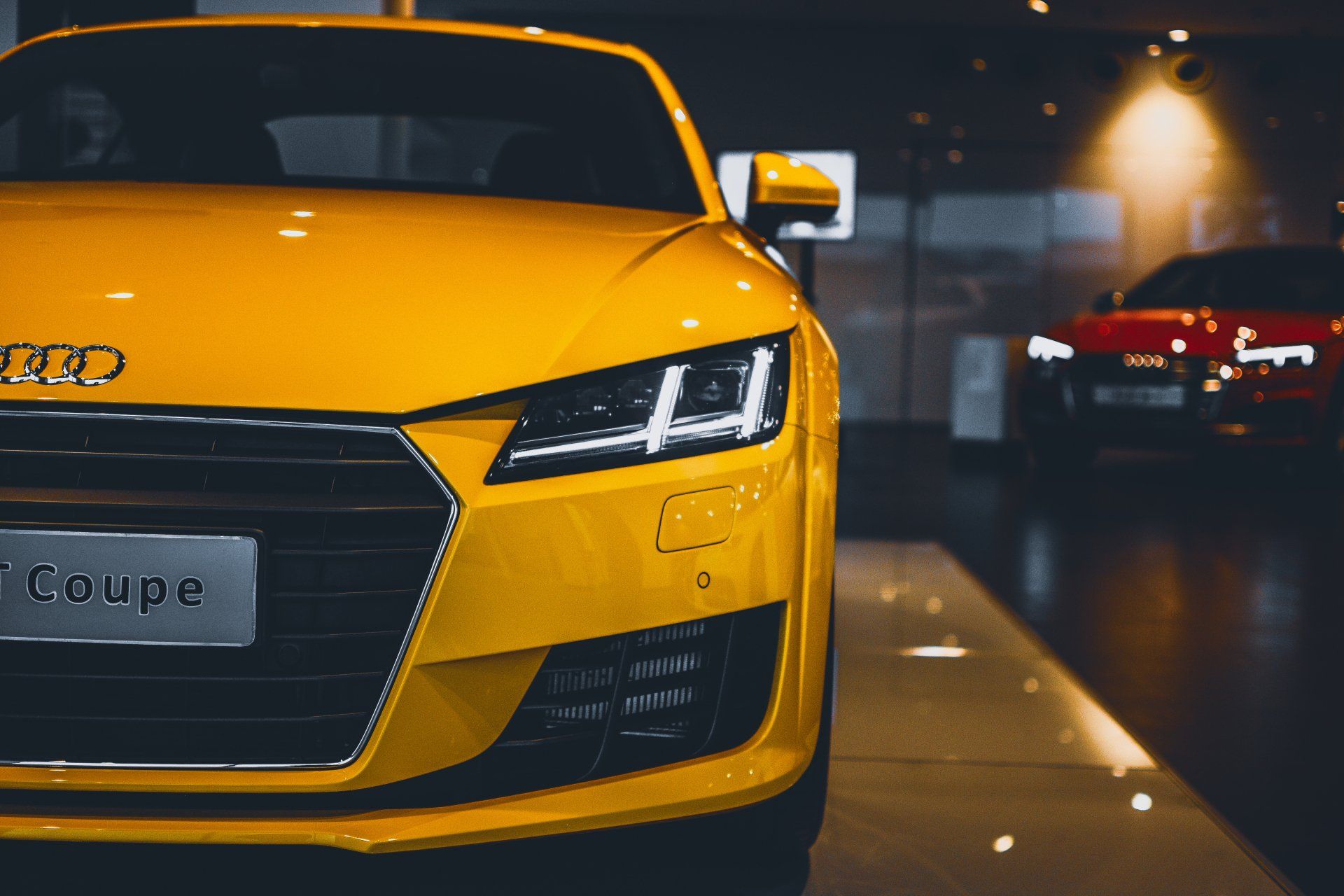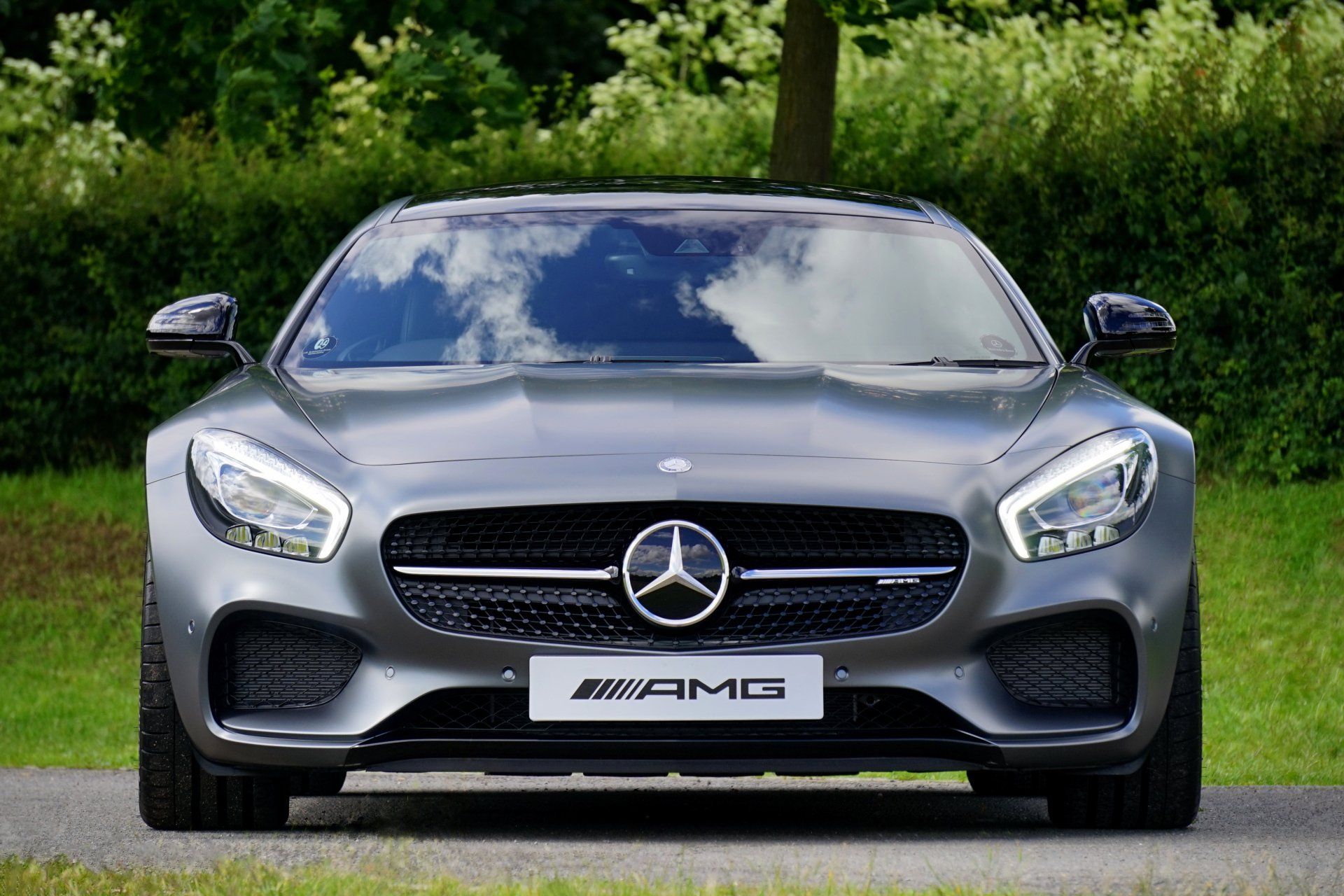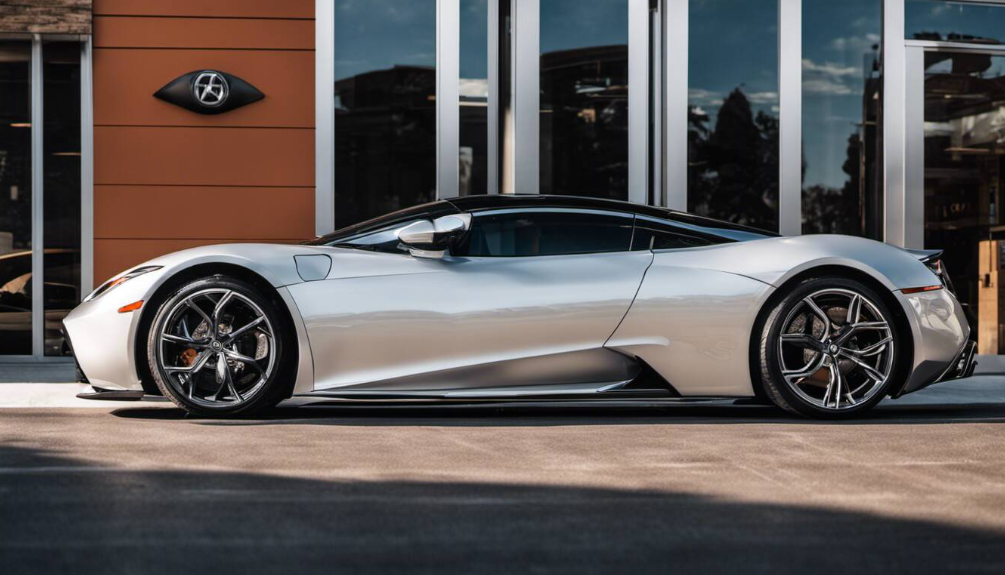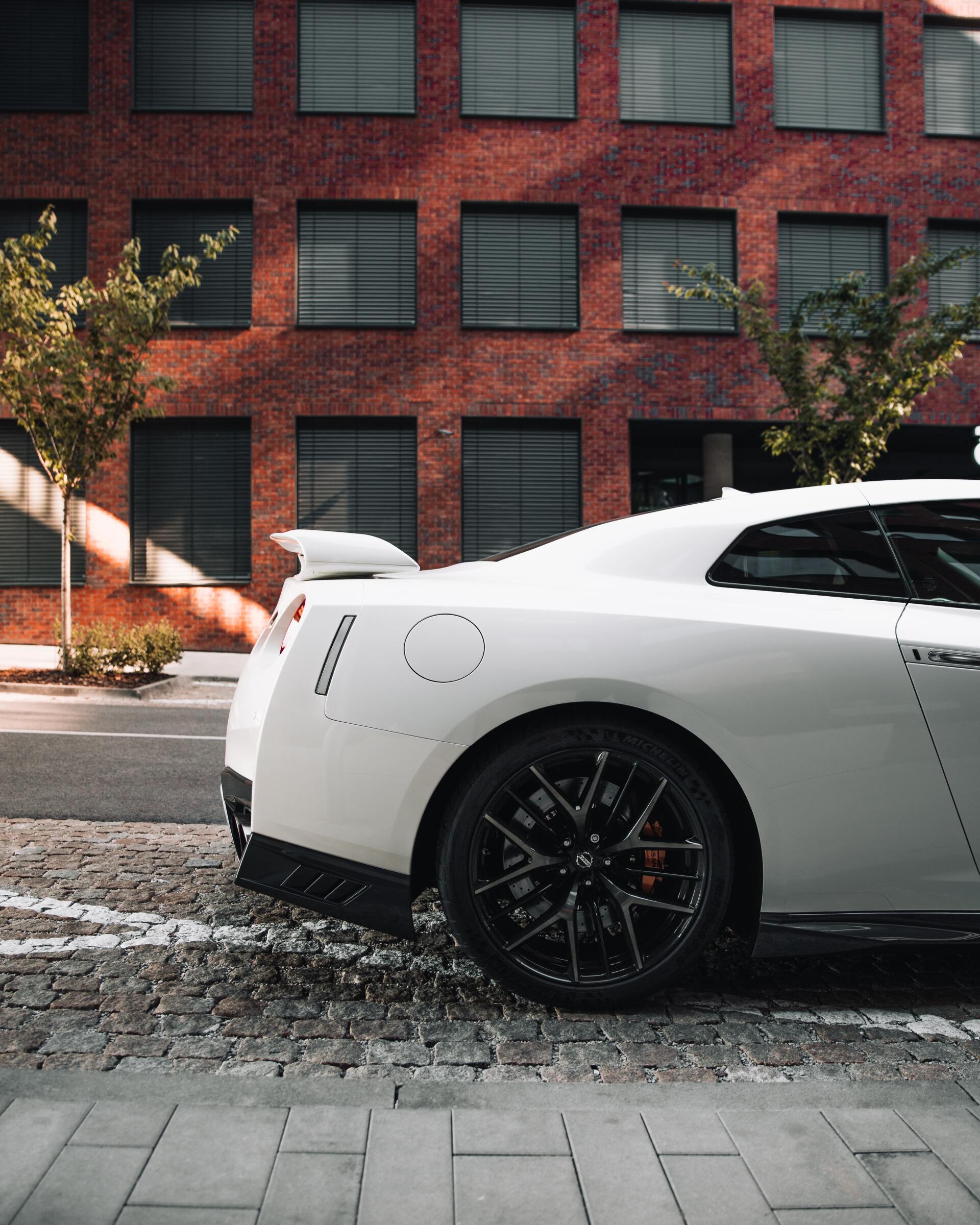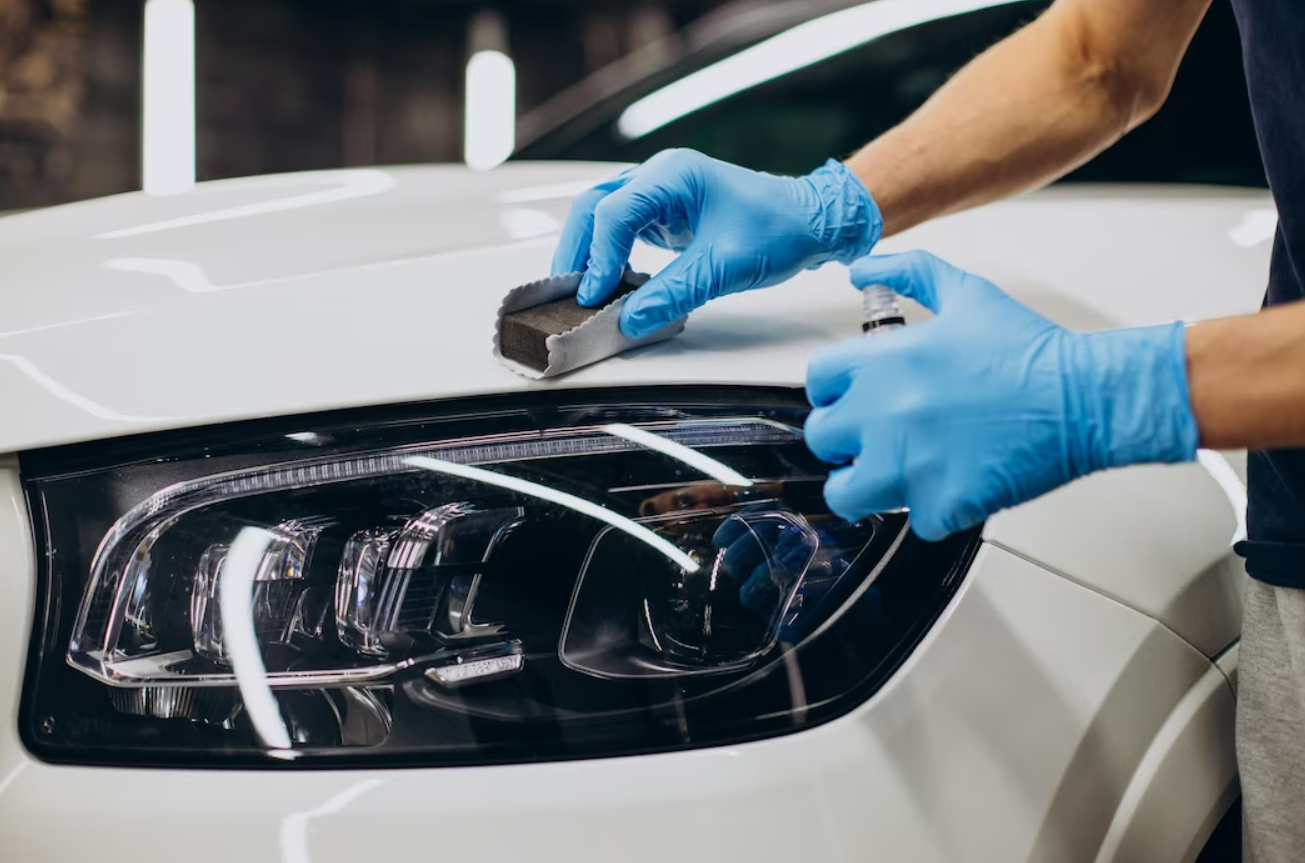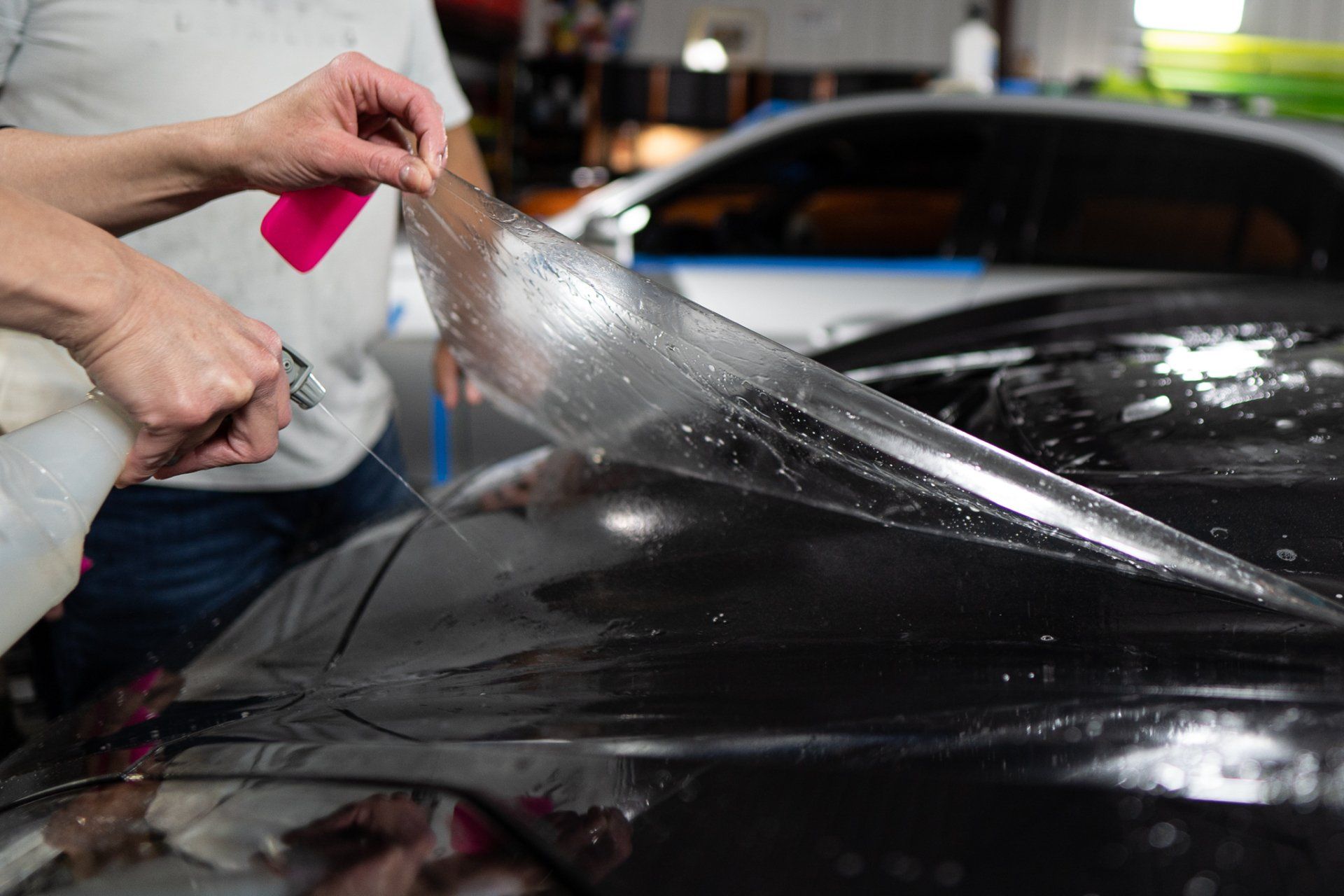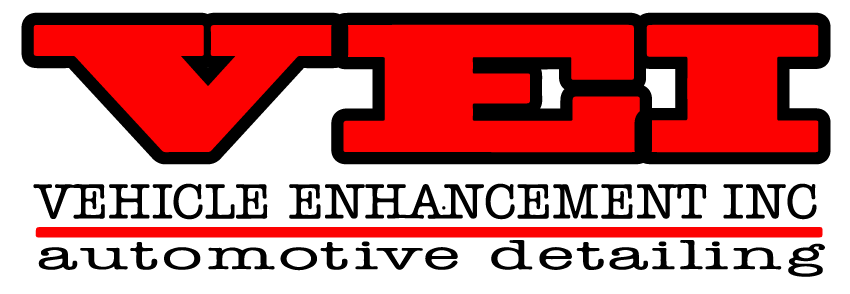There are numerous options available to protect the paint on your vehicle. Most importantly, if you had a multi-paint correction or purchased a new car, you will want to protect it from road grime, dirt, birds, and bugs.
It is quite simple to achieve this with the wide variety of ceramic coatings, paint sealants and waxes readily available on the market. But what about chipped stones, scratches, scuffs, and mechanical damage? This is where a clear bra or paint protection film (PPF) comes in.
A Brief History of Paint Protection Film
During the Vietnam War, this protective film was developed to protect helicopter rotor blades from debris, dust, and flying shrapnel. It was so successful that it is still in use today.
Car racing teams took notice in the 1980s and realized that the film could protect their race cars from rubber flying along the track, rocks, and debris. They also discovered that it provided protection during close-quarter driving contact. It is currently a $250 million market that protects millions of cars worldwide from daily mechanical damage.
All about Paint Protection Film
In a nutshell, it is a fairly thick, transparent urethane layer that is expertly applied on top of the body panel of your vehicle, protecting the underlying paint. Urethane is a common polymer that is widely used in the automotive industry as well as other industries. Urethane insulation, interior components, seals, and bumpers are standard in most modern vehicles.
Urethane is a very strong, chemically stable, and flexible material that is also UV resistant. When applied to your vehicle's painted surface, it acts as a second skin, providing unparalleled protection against mechanical damage such as paint chips, chemical erosion, harmful UV rays, dings, and scratches.
How Automotive Paint Protection Film Works
The paint protection film is made up of several layers of ready-to-use material. Each of these layers serves a distinct purpose. The bottom layer is made up of a release liner that protects the other layers and keeps them clean until they are installed. When it comes time to install, this layer is removed and discarded.
The middle layer is made up of an acrylic adhesive that is about 0.04 mm thick. It holds the clear coat and the paint protection film together. It is intended to be completely removable without altering or damaging the paint permanently. The following layer is made up of urethane, which is responsible for the actual protection. It is 0.152 millimeters thick at its thickest point.
When debris flies into your car, the impact energy is concentrated in a small area due to contact with a point or jagged edge. Car paint is typically stiff and thin, making it prone to cracking and chipping away. They will become visible on your fenders, rocker panels, front bumper, hood, and other surfaces after a few years. In such cases, the paint on your car will never be perfect again.
When impacted, however, applying a paint protection film allows the urethane layer to flex. This absorbs the majority of the force and distributes it over a larger area, preserving the paint.
Is PPF a Worthwhile Investment?
The short answer is yes. The vast majority of flying debris, rock chips, scuffs, scratches, and even parking lot mishaps will be prevented by PPF. While it has limitations, most car owners who have used it can attest that the paint on their vehicle looks perfect even after years of use.
Furthermore, PPF protects against organic acids found in bird droppings, UV rays, bug guts, tree sap, and other environmental pollutants. This is dependent on whether the installation was performed by professional car detailers using high-quality paint protection films.
Applying PPF to a high-end luxury car or a supercar makes more sense because the cost of their paint job can be quite high. This will also keep the value of your car and its resale value higher.
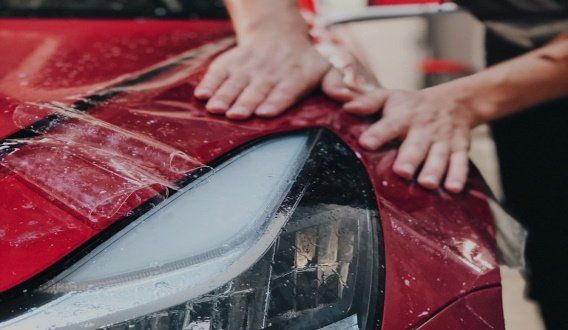
Combining Ceramic Coating with PPF
When you use a combination of ceramic coating and paint protection film, you can be sure that your car's paint job will be completely protected. While protective films protect your paint from scuffs, chips, minor scratches, and other mechanical damage, ceramic coatings provide additional protection against:
- Brake dust
- Cement
- Bird droppings
- Heat
- Salts
- UV exposure
- Road tar
- Bug splatter
- Acid rain
- Industrial fallout
A ceramic coating is also very effective at beading off the water due to its hydrophobic property. Furthermore, the two materials bond perfectly because the ceramic does not interfere with PPF's self-healing properties or cracks.
Ceramic coatings also help to maintain a glossy, wet appearance while making the PPF invisible. This is especially useful for cars that have been partially film-wrapped because it blends the painted surfaces, restoring a uniform finish. So, if you're going to invest in PPF, it makes sense to spend a few hundred dollars more for this coating and reap all of its benefits.
Paint Protection Film Maintenance
According to experts, this is the simplest part of the entire process. This is especially true if the top of your PPF has a ceramic coating. All you need is a weekly touchless wash to keep your car looking pristine.
You can hand wash your car on occasion to remove stubborn dirt. You will not need to use any tar removers, iron removers, detailing clay, or harsh detergents for at least six months.
Get the Best Paint Protection Film Installation in Dayton, OH
Look no further if you are looking for professional car paint protection film installers in Dayton, Ohio, whether you have just purchased a new car or had your car repainted. For years, our highly trained and experienced technicians at Vehicle Enhancement have provided unrivaled installation services using top-tier PPFs.
We offer clear bras that are abrasion-resistant, hydrophobic, and self-healing for all types of vehicles. So, start by reviewing our world-class PPF installation packages and allowing our Vehicle Enhancement professionals to do the job right the first time.
Visit Vehicle Enhancement Inc. in Dayton, OH, for more information on paint protection films. You can also get a free quote by calling (937) 296-0328 today.
